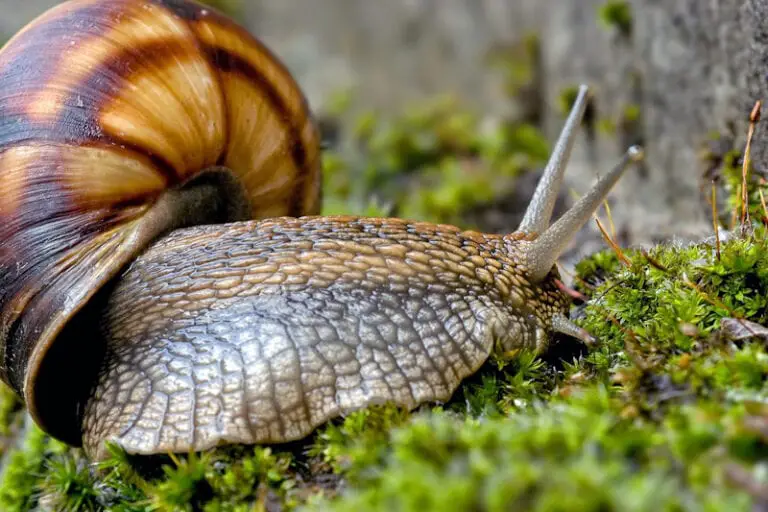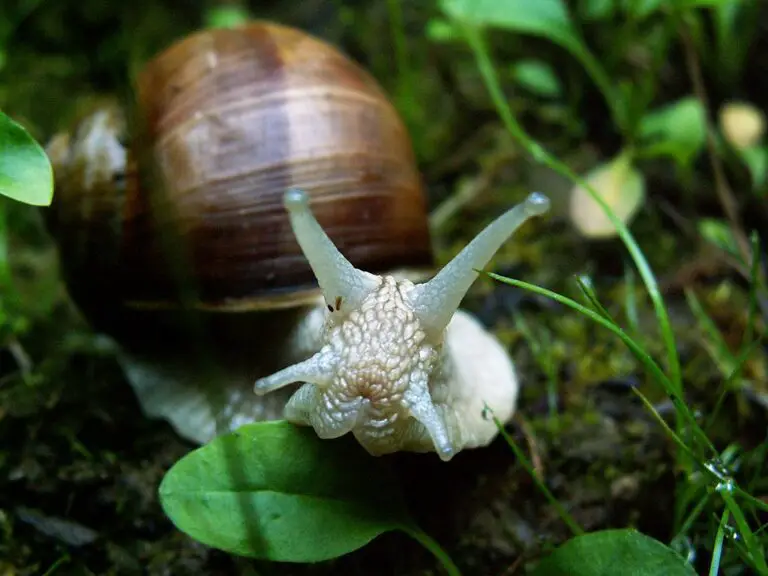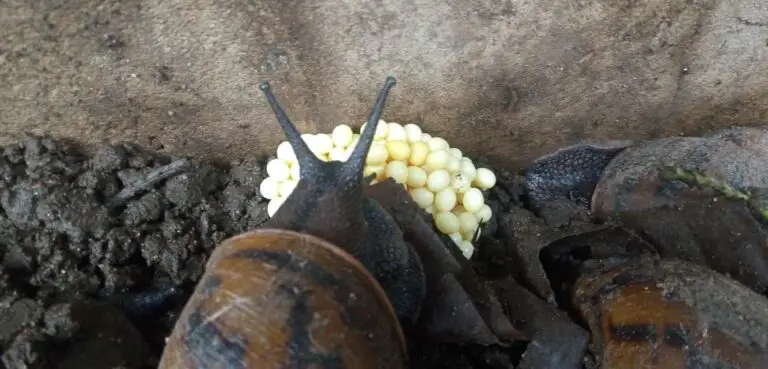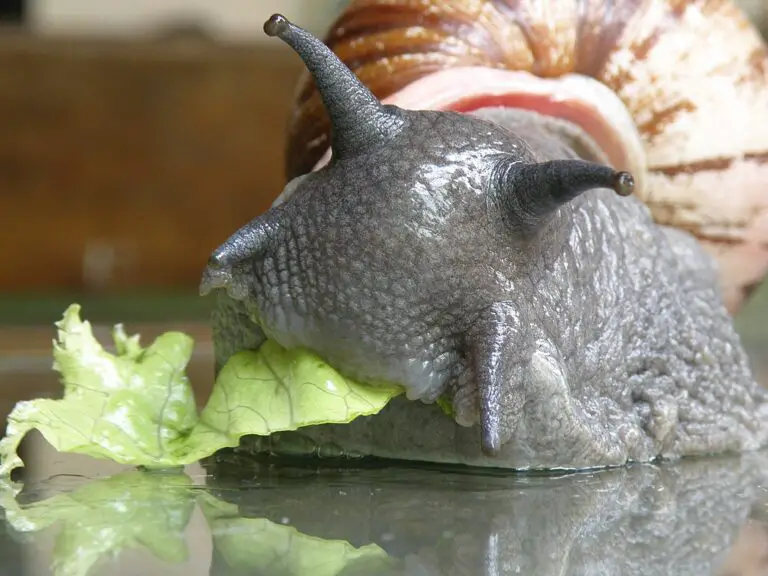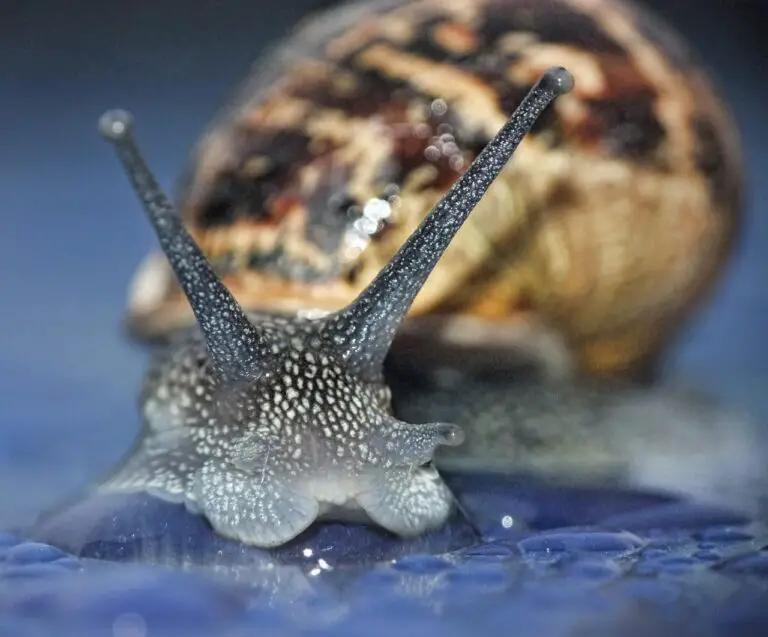Are snails born with shells?
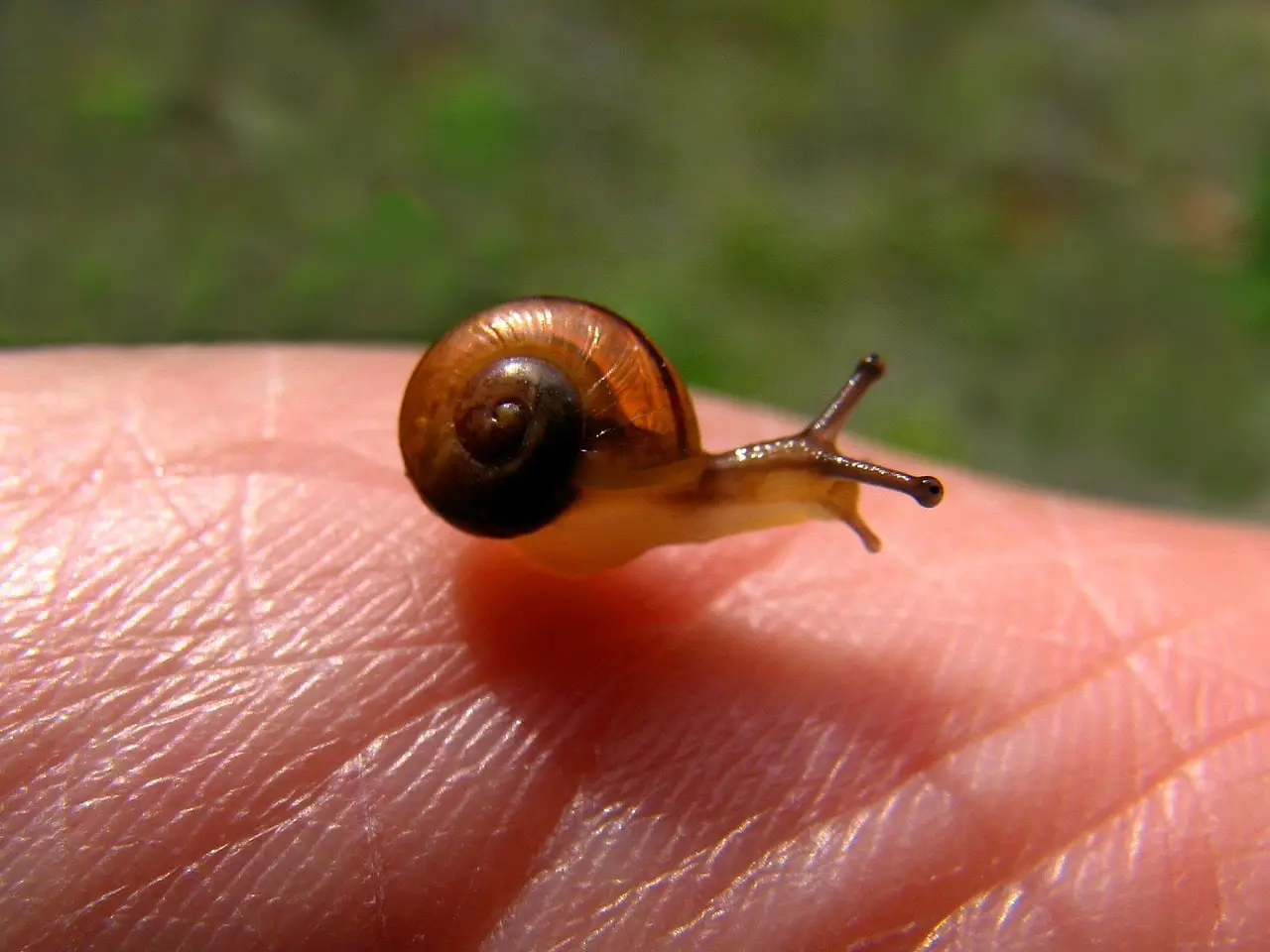
Snails have intrigued people for centuries. Their delicate, spiral-shaped shells, with their intricate patterns and beautiful hues, have become an object of fascination for nature enthusiasts and beachcombers alike. There’s something mesmerizing about the unique homes that they carry on their back, which naturally leads to the question: Are snails born with shells? or do they grow them later on?
The answer to this question is that yes, snails are born with shells, and they continue to grow and develop them throughout their lives.
In this article, we will explore the structure and growth of snail shells, the different types of shells, and the development of baby snails. We will also answer some frequently asked questions about snail shells that you may have been wondering about.
Snail Shell Structure and Growth
Beautiful though they often are, these shells are not mere fashion accessories; they serve a crucial purpose in protecting our molluscan companions from harm. Like an armor plating for knights of old, snails rely on their shells as shields against predators and environmental hazards.
The shell acts as a fortress for these delicate beings, shielding them from external threats such as sharp beaks or claws seeking to make them dinner. It provides them with a sturdy hideaway where they can retract into when danger lurks nearby—a portable sanctuary always at hand.
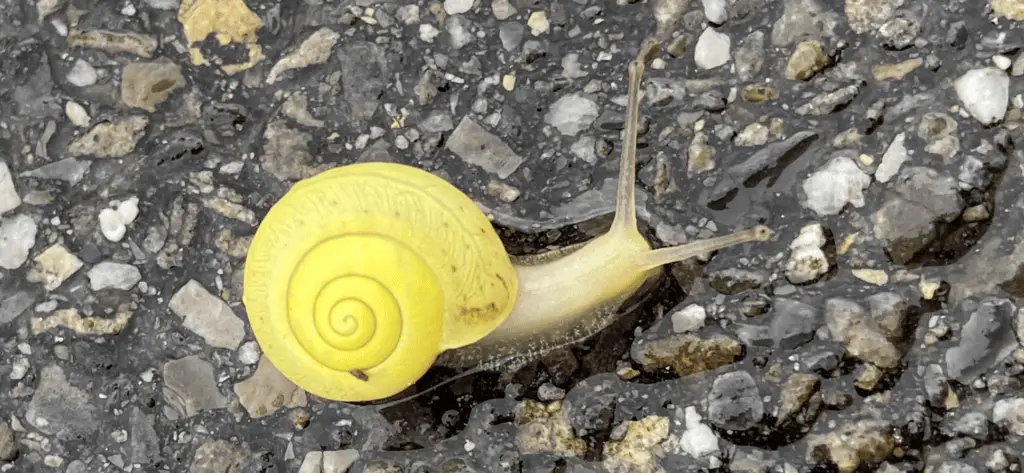
Snail shells are ingenious structures made up of two main components: the outer layer, which is hard and protects the snail from predators, and the inner layer, which is softer and provides a comfortable space for the snail to live.
The growth of a snail shell is a gradual process that occurs throughout the snail’s life. As the snail grows, so does its shell. New shell material is secreted by the snail’s mantle, which is a thin layer of tissue that covers the surface of the shell. The mantle adds new layers of calcium carbonate to the outer layer of the shell, causing it to grow and change shape over time.
| Component | Description |
|---|---|
| Apex | The tip of the shell, which is the oldest part of the shell |
| Whorls | The spiraling ridges that make up the shell |
| Suture | The line where each whorl meets |
| Periostracum | The outermost layer of the shell, which is made of a protein material and is usually dark in color |
| Prismatic layer | The middle layer of the shell, which is made up of calcium carbonate crystals arranged in a prism-like structure |
| Nacreous layer | The innermost layer of the shell, which is made up of thin layers of calcium carbonate crystals and is usually smooth and white in color |
The shape and size of a snail’s shell can vary greatly depending on the species. Some snails have flat, disc-shaped shells, while others have long, cone-shaped shells. The color and pattern of a snail’s shell can also vary, ranging from solid colors to intricate designs.
Factors Affecting Snail Shell Growth
The growth of a snail’s shell can be affected by a number of factors. Environmental conditions such as temperature, humidity, and food availability can impact the growth rate of the snail and the shape and thickness of its shell. Genetic factors can also play a role in determining the shape and size of a snail’s shell.
Overall, the structure and growth of a snail’s shell is a complex process that helps to define these unique creatures.

Types of Snail Shells
There are many different types of snail shells, each with their own distinct characteristics.
| Type of Shell | Description | Example Snail Species |
|---|---|---|
| Spiral | Spiral shells are the most common type of snail shell. They are characterized by their coiled shape and can range from flat to conical. | Garden snails (Helix aspersa), Roman snails (Helix pomatia) |
| Bulgy | Bulgy shells have a more rounded shape, with a larger body whorl and smaller spires. They are often smoother and more glossy than spiral shells. | Apple snails (Pomacea canaliculata), Banded wood snails (Cepaea nemoralis) |
| Tower | Tower shells are tall and skinny, with a long spire and small body whorl. They can have a pointed or rounded top. | Milk snails (Otala lactea), Tower snails (Cochlicella barbara) |
| Globular | Globular shells are rounded and ball-shaped, with a smaller opening than other types of shells. | Globular spring snails (Glyphyalinia globulosa), Rosy glass snails (Oxychilus alliarius) |
| Planispiral | Planispiral shells have a flat coil that lays parallel to the ground, rather than spiraling upwards. | Flat coil snails (Haplotrema concavum), Holly snails (Cepaea nemoralis) |
It is important to note that a snail’s shell is not just for protection, but also plays a crucial role in the animal’s growth and survival. As snails grow, they must continuously add new layers of calcium carbonate to their shells. This process can take years, depending on the species and environment.
Snail Development from Birth
Snail development is an interesting process that involves the growth and development of the snail’s shell from birth. Snails are born with tiny, translucent shells called protoconchs.
The protoconch is a temporary shell that the snail uses for a short period of time until its permanent shell starts to grow. The permanent shell is made up of calcium carbonate and is secreted by the snail’s mantle, a specialized respiratory organ located in the snail’s body.
As the snail grows, its shell grows with it. The new shell material is added to the edge of the snail’s shell in a spiral pattern, which is why the shell has a distinctive spiral shape. The growth rate of a snail’s shell varies depending on factors such as the species of snail, its age, and its environment.
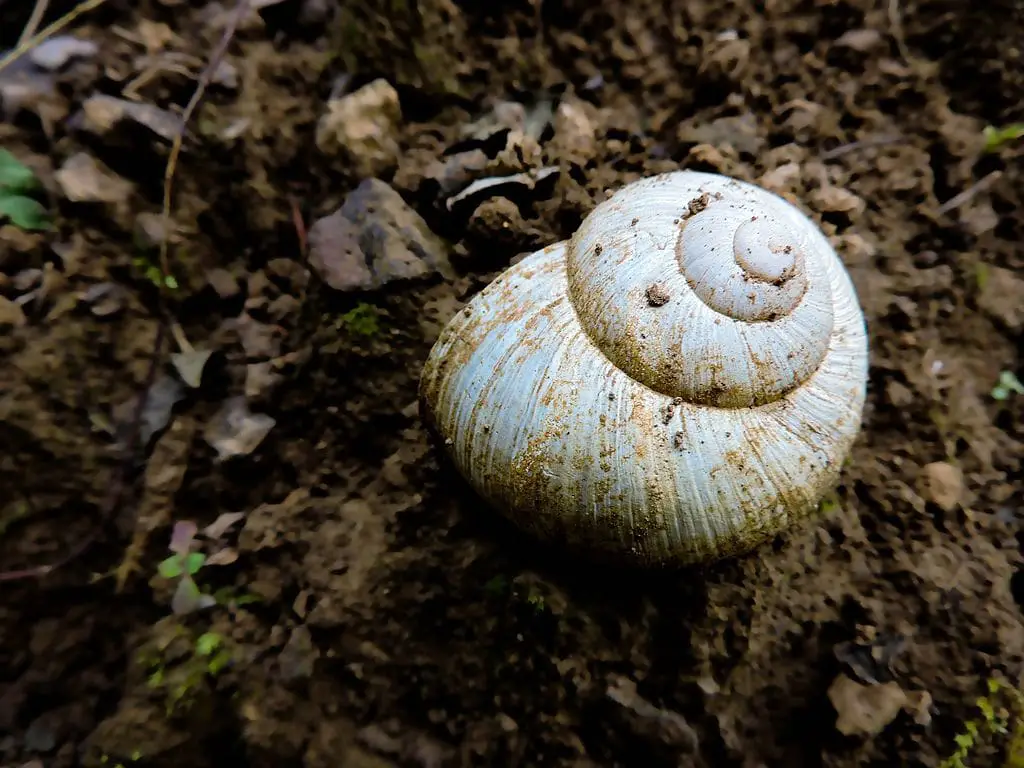
Growth Rings: Nature’s Time Capsules
Picture this: you’re examining a beautiful seashell washed ashore, its colors faded by time and tides. Did you know that these humble shells silently harbor secrets about age?
Take a closer look—do you notice those captivating concentric circles etched onto their surface? Those are growth rings revealing snippets of history encapsulated within each ring.
Just like tree rings tell tales about climate change and historical events, growth rings on snail shells serve as nature’s time capsules. Each ring represents a period of growth in the snail’s life.
By examining these rings, scientists can estimate the age of a snail—remarkable, isn’t it? It’s almost as if the snail cautiously engraves its story for future generations to decipher.
As the snail’s shell grows, so does the snail’s body. The snail’s body is soft and flexible, allowing it to fit comfortably inside its shell. The snail’s foot, which it uses to crawl on surfaces, is located at the front of its body and can be withdrawn into the shell for protection.
Overall, the development of a snail from birth is a fascinating process that involves the growth and development of a unique and protective shell.
Frequently Asked Questions about snail shells
Snail shells are fascinating structures that have been the subject of many questions and myths. Here are some common questions that people ask about these graceful creatures.
Do snails change shells?
No, snails do not change shells throughout their lives. The shell grows with them, and they carry it throughout their existence. The only time a snail may leave its shell is if it encounters a predator or experiences damage to its shell.
How long does it take for a snail shell to grow?
The growth rate of a snail shell varies depending on the species, but it typically takes a few months to a year for a snail to reach its full size. As the snail grows, its shell grows with it.
Are snail shells the same shape as their body?
In most cases, a snail’s shell is a spiral shape that is similar to the shape of its body. However, there are some species of snails that have different shell shapes, such as ones that are flat or conical.
Can snail shells be different colors?
Yes, snail shells can be different colors depending on the species and the environment in which they live. Some snail shells are brown or black, while others are brightly colored with patterns or stripes.
How do snails make their shells?
Snails make their shells by secreting a substance called calcium carbonate, which hardens and forms the shell. The shell grows with the snail as it continues to secrete calcium carbonate.
Snail shells are incredible structures that serve as a protection for these elegant creatures. Understanding more about them can help us appreciate the beauty and complexity of the natural world.
An Optimistic Outlook
The growth and development of snail shells are fascinating processes that highlight the intricacies of nature’s design. From the gradual hardening and addition of new layers through calcium carbonate deposition to the spiral shape that allows for expansion, snails’ shells are remarkable structures.
Moreover, the variations in shell appearance showcase the incredible diversity within the world of snails. So next time you come across a snail with its beautifully crafted shell, take a moment to appreciate its journey from a tiny protoconch to its magnificent adult form – it’s truly awe-inspiring!

